
| |||||||||||||||||||||||||||||||||||||||||||||
|
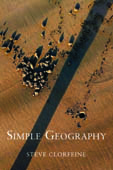 |
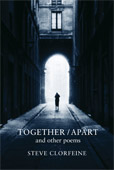 |
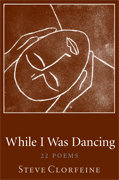 |
Seeing You Again |
Simple Geography |
Together/Apart |
While I Was Dancing |
|
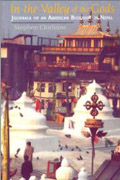 |
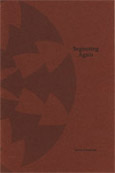 |
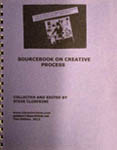 |
Field Road Sky |
In the Valley of the Gods |
Beginning Again |
Sourcebook on Creative Process Ebook |
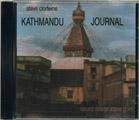 |
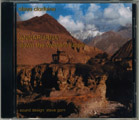 |
|
|
|
Kathmandu Journal |
Annapurna |
|
|
Interviews
|
|||
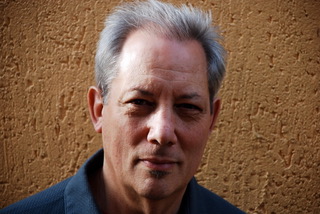
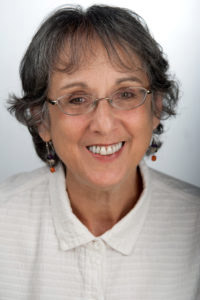 STEVE CLORFEINE: WRITER, DIRECTOR, TEACHER, PERFORMER: INTERVIEW WITH TERRY STOLLER, DEC. 2019 April 10, 2020 Terry Stoller spoke with Steve Clorfeine about his interest in sports and dance as a youth, his association with the Gurdjieff Foundation, his experiences at the Naropa Summer Institute, his performance work with Barbara Dilley and Meredith Monk, and the multiple tracks of his life as a performance artist, teacher, and writer. Terry Stoller: You grew up in New York City, and you’ve said your parents were culturally involved. They did folk dancing, and you accompanied them to local folk dance groups. But you also said you didn’t think of that as something you would do with your life. What were you thinking you would do with your life? Steve Clorfeine: I remember that by the time I was 11 or 12, when people would ask me that, I would say, I want to be a beach bum or I would I say I want to be a baseball player. I was an avid baseball fan. I loved playing ball, any kind of ball – baseball, basketball and all the variations of ball that we played in those days, punchball and slapball. At my grandmother’s place, we would play stoopball. Those were my two stock answers – beach bum and baseball. It sounds as though you were very athletic as a boy, dancing and playing ball. Interestingly, later you get involved in physical performance. I don’t think I ever made that connection to a career or a vocation. My sister was the one who could have been a professional dancer. There was some influence there. She was taking classes with Donald McKayle at the New Dance Group. I would watch her choreograph pieces in the living room. I would put the record on for her and sometimes dance with her. My father was a really good social dancer. By the time I was 12, I was social dancing a lot. We had a cohort of kids who would have ‘socials’ at different apartments on a Friday night, and we would put on 45s and dance. I remember going on a dance TV show called The Clay Cole Show. That carried on into junior high school. In high school, everything stopped. I went to Stuyvesant High School. It was an all boys school at that time and very competitive. I was doing what I thought I was supposed to be doing, studying as much as I could, getting the best grades I could. When you were at Stuyvesant, did you have an idea of what you were studying toward? No clue. I knew what I liked. I liked language and literature and history. In those days, it was common and more than acceptable to go to a liberal arts college and get a liberal arts degree. Were you writing then? I was always writing, but mainly for writing classes, papers, essays. I remember my last year and a half of college, I wrote what I thought were more visionary papers. I was doing seminars at the University of Rochester. It was a very intellectual college. My major was intellectual history. There was something that really clicked for me in that. I’m not sure I’ve ever put it to great use. Except in the various ways I’ve been teaching in my life. During my junior year, I studied abroad in Paris. And at the end of that time in Europe, I did not want to come back. But I did and I was miserable. Then I was pretty much pressured into going to graduate school to avoid the draft. I had to think about what I would do in a graduate school. What I could truthfully say for myself was that I love to travel and I love to interact with people. If I had to say something, I’d say, I’d like to work for the United Nations, even hough I had no idea what that would entail. Now they call that International Relations. That’s the school I was in at Columbia, the School of International Affairs. When you entered you had to choose a regional institute of specialization, and I chose the Eastern European Institute During my traveling time in Europe I had fallen in love with Yugoslavia. We drove along the coast It was my first taste of the way people lived in villages, a fishing culture. I was completely charmed by it. When I got to the School of International Affairs, I was the only one in the class who had a beard, and I knew I was out of place. I was struggling with depression, not knowing what I was doing, and not wanting to be in graduate school. I was living by myself in a studio apartment on the Upper West Side and going to Columbia, and it was boring as hell. The teachers—law professors and international relations people—were reading from the books they had written. In one class the professor told me that because I had been involved in the Student Nonviolent Coordinating Committee [SNCC], I would never be allowed to work for the United States in the United Nations. That sealed the deal, and I realized this was not for me. Despite the risk, I would have dropped out had the 1968 student rebellion not occurred at Columbia. I got very involved in that, and I wasn’t depressed anymore. I had a girlfriend. I was arrested. I got very active in the community. It was an exciting time. There were three of us from the School of International Affairs who were arrested; we had joined a sit-in in Fayerweather Hall. Later the dean of the school interviewed us about coming back to finish our program, and I got a full scholarship. I just basically made up the courses I wanted to do. One of them was Balkan folk dance because there was a master teacher at Barnard, Martin Koenig who gave a real training. I think that was my entrée to formally dancing. When did you begin teaching Balkan dance? That came in 1973 when I was teaching at the State University of New York at New Paltz. At what point did you get involved with the Gurdjieff Foundation? That was in New York City, but it actually started in Rochester. There was a large Gurdjieff group there. I had a distant cousin who was married to one of the leaders of that group. I would hang out with them but I didn’t know it was anything spiritual. I just thought my cousin’s husband was a really cool guy. He gave me different tasks to do, which were Gurdjieffian tasks, but I didn’t know that. They had to do with paying careful attention to things, a kind of active mindfulness. Slowing down was also part of it. They were very slowed down. They were careful about what they did and how they did it, and curious about what the roots and sources of things were. At that time, I had a near death experience in Rochester and I was quite vulnerable. I contracted spinal meningitis. I got to the emergency room just in the nick of time. That was a wakeup call for me. Had you studied Gurdjieff in school? In those days, one wouldn’t have read about Gurdjieff. It was pretty secretive. My parents didn’t know. My colleagues didn’t know. That’s the way it was presented to me. I had this connection from Rochester, but when I asked if I could be part of the Foundation in New York City, I was told to meet a woman who would be wearing a certain color coat in the lobby of a certain hotel. And that’s what I did. What were you finding in that group that appealed to you? I think I was aware of something very unsatisfying in my being—and nothing I was doing or would be doing was going to change that. It had to come from somewhere else. From 1971 to ’74, you were on the faculty and later the director of the Experimental Studies Department at New Paltz. That must have been a really good job, but you left it. That was one of the only full-time jobs I’ve had in my life. I think I already had an inkling that I was not going to be happy in the academic world, even given the freedom I had and that freedom was coming to an end. The State University was coming down on that program. I knew it would soon be over. How did you hear about the Naropa Summer Institute? The last class I taught at New Paltz was called ‘Autobiography of a Search.’ I was kind of outing myself as a Gurdjieff person. We were reading Western autobiographies of spiritual people and during that semester the news about the first summer program at Naropa was circulating. In the middle of the summer I called someone I knew at Naropa who was doing the program, and said I wanted to come out there. I was there for the last two weeks of the program and that’s when I fell into everything that was to follow. That was the beginning of my exposure to Buddhism, to Chögyam Trungpa Rinpoche, to Allen Ginsberg and the Beat poets, and simultaneously my introduction to performance because I worked with dancer Barbara Dilley that summer. For two weeks, I worked with her, and at the end of it I was so moved by what we were doing. 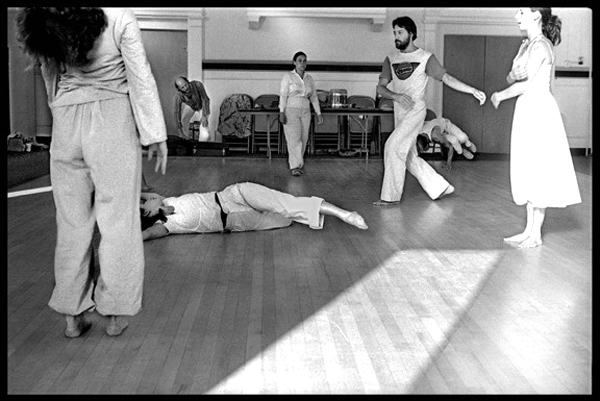 Steve Clorfeine (second from right) rehearsing with Barbara Dilley’s company, Naropa, 1976. Would you describe what that was? The movement was basically pedestrian movement . We improvised and there was a theatrical aspect to it. It wasn’t about being a dancer but about engaging in relationships through time and space. It was something that Barbara was exploring for herself, having come out of the Merce Cunningham company and out of the improvisational troupe the Grand Union. I privately mentored myself by watching that group perform. At the end of those two weeks in the summer, I said to Barbara, I’m moving back to New York City. I’d like to take class with you. And I remember her saying, I want you to. But first I hung around out West, went to Oregon and New Mexico. When I was in New Mexico, I got a letter from Barbara saying, I have a performance at the Kitchen in November. I want you to be in it. I came back to the city at that point and did that performance—which was the first performance at the Kitchen when it was in SoHo—and then I continued to work with Barbara. It was all improvisational movement. There were structures, but there was no set movement. How comfortable were you doing that? It was edgy for me because I was such a newcomer to that world. This was SoHo in its heyday, 1974, 1975. I was a newcomer to the avant-garde, and I was surrounded by dedicated experimental artists. Weren’t you involved in experimental studies at New Paltz? I was. I created the ethnic dance and music program. That’s when I invited Brenda Bufalino to teach, as well as a Native American dancer, an East Indian dancer. I was teaching Balkan dance, and I was taking tap and jazz with Brenda. How did you meet Meredith Monk? The second summer of Naropa, I went back as Barbara’s assistant. We rented a big house together, and everybody came through that house as guests—and Meredith came. I remember she was sitting on the front step with her suitcase when I came back from class. We immediately started talking about Gurdjieff. That was the ground of our friendship. I remember stage-managing the performance she did at Naropa. I also met Lanny Harrison who was an original member of Meredith’s company. Lanny and I were performing with Barbara. And through that, Meredith invited me to be in her company. Lanny and I would go on to tour and perform together from 1987 on. Was Meredith Monk’s company improvisational? Not at all. We improvised a lot in developing characters and pieces, but on the contrary, Meredith’s work was set to the nth degree—it was very precise. I can still remember the timing of entrances I made in performances of ‘Quarry’150 times over a period of the first two years, and then ten years later for a revival. You were also working with Ping Chong. Ping was in Meredith’s company. When I wasn’t working so much with Meredith anymore, Ping asked me to be in one piece, then a second piece with him. Were you studying while you were working as a dancer? I went back and studied techniques as best I could: ballet, Erick Hawkins, anatomical release. I knew I was catching up. I was also taking voice lessons. Later on, I was studying with a well-known drama teacher, Ada Brown Mather. She came out of the Royal Academy of Dramatic Art in London, and she came to New York for half the year. I did scene study with her for four or five years, really not my cup of tea, but I loved what I was doing. She was very interested in meditation. We had a real friendship, which was sweet. I hung in with her for all that time, even though memorizing lines for scenes didn’t feel like a way forward. What do you think you learned from working with Meredith Monk? The longer I live, the more respect I have for what I learned from Meredith. She could be really tough, and I pushed back. What I learned from Meredith was precision, timing, design, the ingredients of experimental theatricality that had nothing to do with scenes and lines. There was almost no text in the work that Meredith did. Vocal sound, but very little text. I never said a word in any of her pieces. Very few people said more than a line here or there. What I brought to Meredith, from working with Barbara and from my own background, was presence, and the work with Meredith enhanced that. I think all the people in the company knew how to radiate presence in performance. 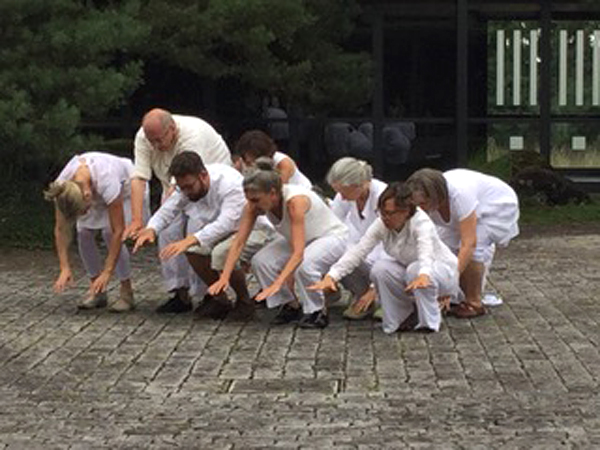 Improvisational performance directed by Steve Clorfeine, Zurich, Switzerland, 2017 In the late seventies, you started Shambhala training and by the mid-to-late eighties you were an instructor. Did you stop performing? I didn’t really stop. The one time I stopped was when I went to a three-month Buddhist seminary in Pennsylvania. That was a difficult break because I was on a roll. I was cast in Jean-Claude van Itallie’s production of The Tibetan Book of the Dead at La Mama. It conflicted with the seminary, and I went to the seminary. Appearing in that production might have been a good career move. Do you know why you made that choice? The career move that it would have been was in the back of my mind, but it never came to the front of my mind. Something in me has always pushed back from ambition of that kind. I played my part. I got grants. I did work. I got reviews. But I don’t have that personality, and I knew that all along. What did you do at the seminary? It was an enormous amount of sitting meditation practice, but it was also studying Buddhist texts, listening to talks, being part of a seminary environment, but very social as well. Were you looking toward leading meditation groups? I didn’t imagine giving up my performing career or my teaching career. The ground for those dual tracks – teaching and performing - were laid in a parallel way from the beginning, from my Balkan dance days. You produced a performance piece titled Blue Serge Suite, which was semi-autobiographical and included film. The first iteration of Blue Serge Suite was in 1979 at St. Mark’s Danspace. Then in 1981 I revised it which included my first film and performed the piece for two weeks at the Warren Street Performance Loft. Making that film came from the influence of Meredith. I had two friends who were in film; one was a film editor, and the other was a cameraman. It was February and we went out to film at the ocean at Brighton Beach in Brooklyn. The section we were filming was a movement piece. It was windy, and the cameraman filmed with sand blowing on the camera, and it was beautiful. I still love that film. From then on, many pieces I would make included film. My interest in film in live performance is to create another voice, one that is not dependent on my physical presence. It gives the audience a chance to enter another space, to go on a visual journey that offers another landscape and invites another kind of imagining. 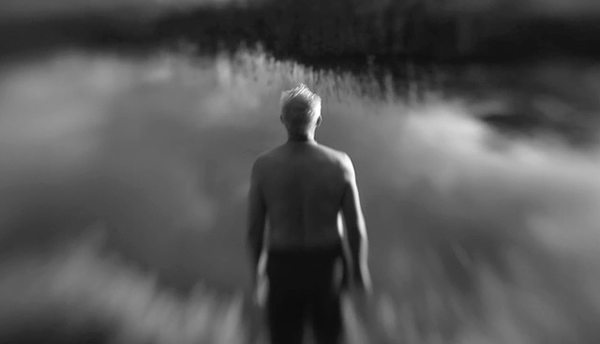 Steve Clorfeine in one of the films from Nomad Project #4, 2017 I’ve gotten the impression that your performance workshops are mostly improvisational. What I’ve been teaching all along is improvisation. In Europe, it’s called physical theatre, movement theatre. For myself, I’ve only done small pieces that have improvisation in them. Any larger piece is structured. You worked in Kolkata and Kathmandu in the 2000s as a cultural envoy. Those were wonderful commissions, well-paid. In Kolkata, it was a six or seven week project, and I was working with undergraduate and graduate students in the theatre department at the major university in East India. It’s called Rabindra Bharati University. The origin of it is Tagore and his family, on whose properties the university was founded. I had to figure out what kind of piece I would be making. I’d worked a lot with personal storytelling. I knew I wanted the piece to involve that. I also knew it was risky because Indian people don’t talk about themselves the way we do. I had a hope that a younger generation of students in a theatre program would be game, and eventually they were. 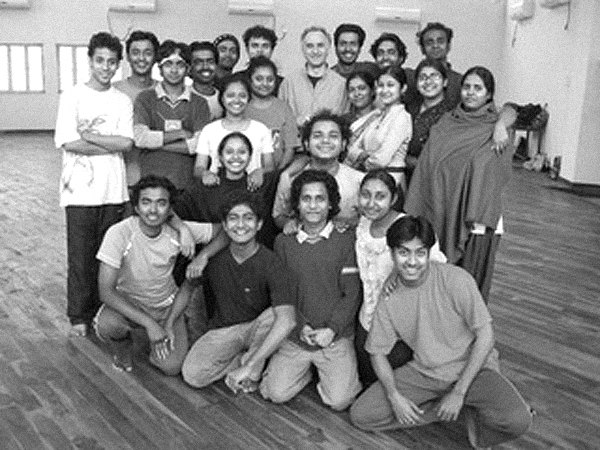 JHUKI, conceived and directed by Steve Clorfeine; Kolkata, India, on Rabindranath Tagore’s former family estate, 2008 The first thing I asked them to do was to tell a story about something that happened in their childhood that was transformative. I would get stories about stealing mangoes from the neighbor’s yard and bringing a cat home, things like that. I was able to say that’s not what I mean, but I couldn’t describe what I meant. There was a language issue. Then in one rehearsal this young man, Anirban, who later was invited into the Indian National Theatre, told a story that was spontaneously multilayered and full of understated conflict. And I said, that’s what I’m looking for. The next day another young man came up to me after class and said, Can I tell a dream? I said, please try it. He told a dream that was also multilayered in that way. And then people started to come forward a little bit more. The women were reticent. One woman who was in a theatre company since she was a child, really encouraged the women to come forward. There was a woman who was a kind of outsider, and she told a story that had the implications of being an outsider. Another woman told a story about coming home from school and inadvertently walking into the back room of her house and seeing her uncle hanging from a rope. These are things that are not spoken about in Indian culture. Those stories were told, and they performed them. 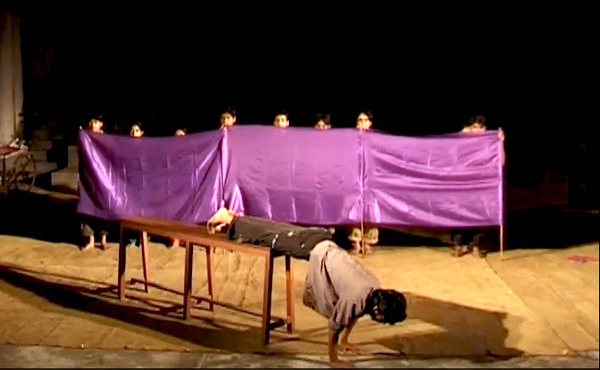 Anirban performing his story in JHUKI, 2008 Don’t they have a different performance practice in India? I had four weeks to train them in physical improvisation. They were like nobody I ever worked with. They were so facile in movement. On my website there are videotapes of the two young men I mentioned and others in the performance. 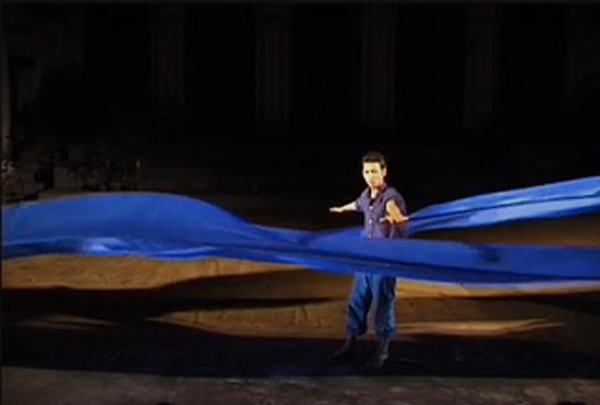 Jayanta Chatterjee solo in JHUKI, 2008 In 2015, you curated a show at Westbeth called Correspondence, and you mounted it later at the gallery at SUNY-Ulster. Is this another track you’re pursuing? I’ve been doing collage for many years on and off. I came back to it about six years ago. I also saved pretty much every letter that had ever been written to me. Blue Serge Suite has a section with a box of letters in it. I was really wanting to get rid of these letters. Especially the love letters. That was an emotional decision. I had to stop knowing they were there for me to mull over. I started playing around with things, and then I started collaborating with Christine Alicino, who’s both a commercial and art photographer. I would set up these shots of different stacks of letters and postcards, and she’d shoot them. Then I had the idea to invite friends of mine who are artists to come over, and I’d dump out these letters and postcards and say, pick whatever you want and make something with them. And then it expanded. I had a fellowship at the Vermont Studio Center in 2014 for this project. Some of the young artists at that residency were so interested in the piece that I asked about eight of them to participate. I got the Westbeth Gallery and had friends help mount the show. 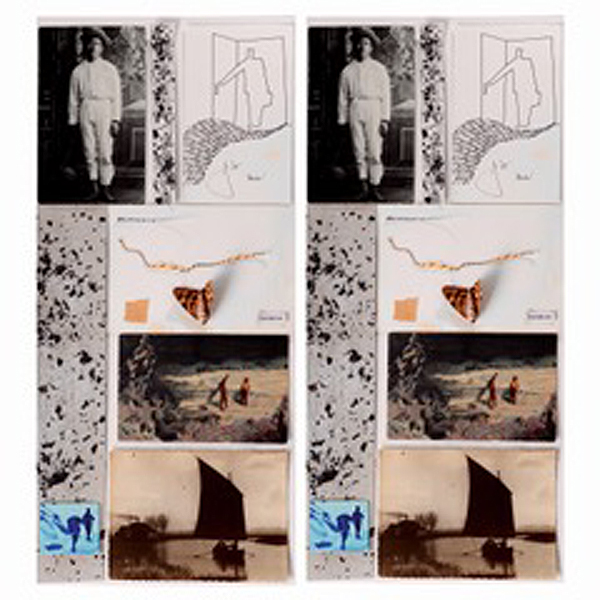 Take One/Take Two by Steve Clorfeine in Correspondence show, Westbeth, 2015 Correspondence is a theme in your some of your other work. You teach writing through the idea of correspondence. And you have a section in one of your poetry books that is your response to postcards. A good deal of my published work comes out of my journals. I would say that journals are a personal correspondence, basically. I’ve been keeping journals since 1969. At the beginning it was a Gurdjieff task. So for the first five years, my journaling was under that rubric. When I left the Gurdjieff work and started to be at Naropa every summer, the journals became much freer—and they had cutouts and collages in them. It’s been a constant practice for fifty years. 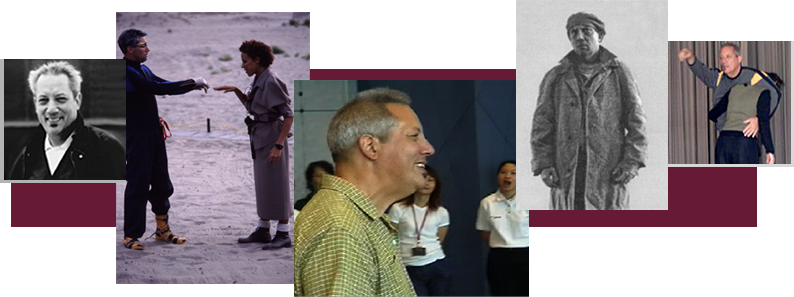 Left to right: Steve Clorfeine, 2002; SC and Tone Blevins in Art on the Beach, lower Manhattan, 1984; SC teaching in Singapore, 2003; SC performing Samuel Beckett’s Act Without Words, New York Shambhala Center, 1999; SC improvisation performance in Cologne, Germany, 2001 INTERVIEW WITH STEVE CLORFEINE BY DIANA WALDROP/CODHILL PRESS August 20, 2015 Interview with Steve Clorfeine on the publication of ‘Together/Apart and other poems’ Diana: What went into the inspiration behind this book? Why does it exist? Steve: I’m always writing and even though there are spells when I’m not writing, I’m keeping a journal. I tend to go through what I’ve written and revise, rewrite, and when I see a kind of pattern forming, then I think, well, maybe this could move towards a book. So this is the fourth poetry book – three of them with Codhill. I had the title ‘Together/Apart‘ for a long time. That’s how it works for me. In fact, I have the next two titles – I’ve had them for a few years. There was a time when I was really working pretty steadily on all three of these books, and this one got completed, or took its shape, about two years before it was actually published. And then there were delays in the publishing. It was because of the delays that I kept working on the pieces. The middle section of the book is called “Postcards” and that’s been a collection of poems that has been around in rough and finished forms for maybe 15 years. A few appear in Field Road Sky which was published in 2007. One or two appear in the 2010 book, While I Was Dancing, though they’re not in a form that you would recognize as postcards. But the postcard section in this collection is a conscious attempt to group them together. About the postcard series – I use postcards as a writing exercise with high school students, and in private writing classes. In the exercise I spread out a pile of postcards, and ask people to pick one and respond to it in any way they want: investigate everything about the postcard – the image/photo that’s on it, the way it’s addressed, stamped and postmarked, the commercial description of what the picture is, and the contents of the writer. I suggest that – as a way in – one could imagine oneself as an investigative reporter or the nephew or mother of the person who wrote the postcard, or a journalist writing about an event that is the postcard, or just working off the imagery of the front material – the image or photograph. I know most all the people who wrote the postcards I’m offering and the ‘responders’ don’t know them at all so it’s always interesting for me to see what they write. High school students do some amazing things with the exercise. They really go off on tangents that are less censored. Diana: Is it mostly poetry that the students create? Steve: Yes. I ask people to write in a prose-poetic form – to write in fragments or lists – to try not to use small words to link thoughts together. Don’t be logical. Let yourself leap from thought to thought; image to image, phrase to phrase. A through line may emerge or a beginning or ending. Occasionally, the postcard itself tells you the beginning or end – there might be something about the salutation at end of the postcard, or the last line of the text. Here’s a line that ends one of the postcard pieces in the book: “I’ve thought of you many times over the years, wanting to be in touch.” Before that I’ve quoted this person twice, directly from the postcard, so in a way, it’s like a beginning, middle and end. The first quoted line is: “‘I’d love to see or speak with you.” Then towards the end, “‘Life has been a bit too full but with all lucky things,” and then the end is “‘I’ve thought of you many times over the years, wanting to be in touch.’” Sometimes the body of the message gives me the shape and then in between I play around with the other elements of the postcard. For example, this same postcard poem has a long section about the stamp: “Mary Cassatt (or the subject of her garden portrait) flanked by tall blooming bushes, the foreground and background of the painting set apart by the woman’s white dress, her body fitted to a round wicker chair, arms raised, both hands holding a magazine.” And my comment – “All this on a stamp, six swirling cancellation marks that don’t obscure the stamp’s summer calm.” Then the interjection – “I’d love to see or speak with you,” and then I move to the photograph on the front and from there I comment – “The profile of a thoughtful seated man, forearms resting on a sturdy wooden chair.” I’ve made a parallel to the woman sitting in the chair on the stamp and now the man on the front photograph also sitting in a chair. The parallel interests me and I speculate – “Could he live in the house next to the garden where Mary or her subject sits in the postage stamp image on the reverse side? Having caught a glimpse of a figure in a white dress, might he imagine her snug in a wicker chair in the garden next to his?” All keeping in mind the words of longing of the writer of the postcard. There’s so much to play with and move around with in the information that’s on a postcard. This is coming from a genre that you might call “Found Text.” It was promoted by a lot of writers, particularly poets, in my early experience teaching and studying at Naropa University. In the early years of the Summer Institute, we each taught one course, and then we could take anybody else’s courses. I did a lot of studying with writers – Allen Ginsberg, Anne Waldman, California poets Joanne Kyger, Diane di Prima – and went to dozens and dozens of readings. That was a real influence on me in terms of my own poetics. When I started teaching writing in schools, I started looking at the fine lineage of writers who developed ways to teach writing in schools – Ken Koch, Jack Collom among others. Diana: Do you have certain techniques that you always teach or do you change with each class and depending on the students? Do you find one technique that works really well to help people to access that part behind the thinking mind? Steve: I like to work with free writing to live piano (my wife plays classical pieces and improvises) as a beginning in private workshops in my house. I might offer a prompt – a specific word, phrase, or title. I encourage listening, looking, direct observation of the environment; looking and listening into one’s mind-body of the moment. Diana: Interesting, so you listen and you write what you think it’s saying? Or…? Steve: Not so much that—you just write. You don’t try to think about what it’s saying; you just follow the impulse that’s set up in you through listening. I usually ask people to listen for a minute before they start writing and just notice where they are and what they’re bringing to the situation. We work on slowing down and paying attention to details: feelings, what your state of mind feels like. Sometimes I base a writing exercise on asking people to write down everything they can remember about the last 24 hours. In list or fragment form. Then I give a prompt – a phrase or title – and they’ve got this head start – having looked at the situation of the past 24 hours. It’s like opening a window and looking out/looking in. So you’ve got a landscape there as the ground. Diana: Do you have an example of the types of phrases you would use? Do you just think of them on the spot? Steve: No, I usually plan them. Sometimes I take them from someone else’s writing. If I read a paragraph or two from someone’s writing, I might use four words or the beginning of a phrase from that. Sometimes I’ll create the phrase myself. I teach in the Cooperstown high school every year. Two years ago I noticed that I was getting tired of what I was doing. I didn’t force myself to change anything, but I started listening to a 4-CD set of a hundred poets and writers from 1898 to 1990 reading their own work. It Includes the earliest (or only) recordings of Walt Whitman and Gertrude Stein. The recordings aren’t fully audible, but you get a sense. The contemporary writers and poets are varied and really interesting and there were pieces that I honed in on and listened to three, four, five times in order to select what I wanted to work with. That was the development of another way of working. I asked the students to just listen and get the feeling of how the writers were working with rhythm, sound, imagery, with their delivery. I speak about writing from influence. I pared the recordings down to three or four pieces, and played each piece twice – first for listening and after the second time I asked them to write in that cadence, under that influence—just write under that influence. Although these are advanced writing classes and it’s 8:25 in the morning in high school and they have whatever inhibitions they have, I’m impressed by their willingness to go with it – the rhythms of early Le Roi Jones, for example – really turn them on. I teach a workshop in my home in Kingston once a month and each time there are five to eight people. When I’m preparing for that, I go through all the materials I’ve collected, and I think about what’s drawing my attention. Then I’ll go back to shelves of poetry books—I’ll go through a few of them and choose some pieces that resonate at the moment, and I’ll start the class like that. Often I’ll read an excerpt from one or two books that I’m currently reading to point out different elements of style or content. So it’s a writing workshop but it’s also a conversation workshop. We share inspirations of other people’s work. Going back to the book, the postcard poems form the middle section. The last section is called “Place.” I’ve often used the word place as a location for a series of poems. Field Road Sky was mostly lyrical and rural-oriented. Until five years ago I lived pretty deep in the countryside around here. A lot of my writing was drawn from being in a rural place and having a way of seeing and feeling the environment from day to day. An event like an interaction with another person or an animal might be significant because it was the only thing that happened in a day. Many of those poems began as journal notes that were later shaped and sometimes collaged. I might go through a journal and copy out 50 phrases or paragraphs from a period of six months to a year, cut them up and see how that might fit together into a section or a whole piece. For example, there is a narrative developed around the path across the road from where I lived. I walked there often, so there were seasonal impressions of that path which produced the structure for several poems. In ‘Together/Apart’ – in the final section – “Place” – the places are all imagined. One is a dream. A couple of them came from a moving and writing duet I do with a partner. Those are images evoked by moving with eyes closed, and combined with free writing, like this one from “The Quarry”: “Over smooth rocks, over watery crevices on their bellies, the women slide like creatures who go silent when approached. When alone they splash wildly, propel themselves off the rock face into air and fly or fall downward, catch the waterfall climb back up triumphant and fly down again.” Diana: There are three sections of the book – you’ve spoken about the middle section – ‘Postcards’ and the last one, ‘Place.’ What’s the first one? Steve: The first one is called “Together/Apart.” Much of that is about relationship. The first seven are relationship poems. They investigate the dynamics between two people – some of it drawn from my own experience, my own relationship, and some of it I’m just playing, extrapolating. I’m certainly taking liberties. Diana: How would you say these three parts connect? Or what is the thread underlying the poems? Steve: I don’t know that there is a thread. My questions are: “Who I am in my writing at this point; what do I want to put out there?” Some pieces have been waiting on the sidelines – waiting to be fitted in. I’m pleased with the collection ‘Together/Apart’. I hear it as my voice now, even though it’s not “now” anymore. The newest poems just slipped in about six months ago; the others are anywhere from the past two to seven years. The last piece in the book is sourced from a guy who sublet my apartment many years ago and wrote me a note in broken English that was like a mirror of my life. Later I transformed it into a performance piece where a character comes back from a two -month theater tour, re-enters his apartment and sees this note on the table. The performance begins with me reading this note. Then it transformed again in the next iteration of that performance piece. In the third iteration 15 years later, I brought it up to date by shifting it from the original apartment note to a mixture of the original note and a note that someone who sublet my house in the countryside had written to me. I also imagined a note I would have written about staying in my house. It’s a pretty straight narrative piece, more so than most of the others. Diana: What do you mean? Steve: Many of my poems make leaps and challenge the reader/listener to resist trying to figure it out logically but rather to catch the arc and just ride it, tune in to the feeling of it, to the way I’m speaking it or the way my voice has written it down. My writing is coming more from my voice than from a literary style. I’m speaking the words that I’m writing. Many of the poems work as spoken pieces. They have a spoken sense that may come through differently than on the page. On the other hand, someone could read it on the page at different times and get something other than what they got hearing it aloud only one time. I guess it goes both ways. Diana: As far as the form of each poem, is it just kind of random or did you use a specific form in writing these poems? Steve: The relationship poems are all “he” and “she.” That was a choice I made. Once in a while, an “I” will slip in, like in this one “I draw a picture with a story—it’s you and somehow more.” But generally it’s he and she or you. Some of the poems in ‘Together/Apart’ have numbered stanzas. The longest is five stanzas. That’s the way I’m moving from one thought to another, or shifting from one time frame to another. There’s a long poem called “Begin Again, Spring,” and it’s based on notes I made when I sublet an apartment five years ago on the upper west side. It was Spring and I would take a walk every day in Riverside Park or Central Park, so this poem is a collection of notes from those walks and I mixed them together as if it was one park, one day. Often, repetition is part of the structure – like referring to a dream and referring to the moon, in the poem “Here’s What Happens.” Sometimes it’s a dream shaped into a story—like the piece “S. Klein on the Square.” It’s a story. It moves that way. There’s a flashback in it, but basically it moves right along—in what you could imagine to be 5 or 10 minutes of time passing. Diana: How do you know when a poem is finished or ready? Or do you ever know? Steve: Maybe I’m a little lazy about that because I tend to know that it’s finished when the last line works. After that there will be more work on it, but sometimes that’s the way I know. I might be looking for the ending and it may come from the body of the piece itself, as if it was heading that way from the beginning. In one of the postcard poems, I’m in residence in a theater school in Amsterdam and I’m writing to a friend. I’m using her actual postcard and my imagined response to her. At the end I write, “Imagine us meeting in the Gemeente Museum wearing clogs speaking like Nederlanders.” I’m mixing two worlds in different time frames. The postcards seem to find their own endings. In a short story – that’s where I often struggle with an ending. Diana: Do you write more poetry rather than short stories? Steve: I write more poetry or at least I publish more poetry. I’ve published one nonfiction book. Two projects that have been going on for some years; one is a memoir piece, a collection of stories from the time I was 8 or 9. Most of them are childhood stories. And the other book I’m working on is nonfiction – based on my journals and travels in India for the last 20 years. Diana: is that like the Nepal book? Steve: The Nepal book was published in 2000 and was based on three long trips to Nepal. This one begins in ’95 and goes until I stop traveling to India and get this book out. It’s a hard one because India is changing so fast. The earlier notes I kept are so different in tenor from current ones. Diana: As far as reading poetry, what advice would you give, or maybe take for yourself, about how to read poetry? I don’t think there’s one answer to that – does that make sense? Steve: You mean if you pick up a poetry book, how to read it? Diana: Yes, because you can read poetry and you’re not really feeling it because you’re trying to intellectualize it. So basically, how do you stop intellectualizing it and actually get into it without getting stuck on the mental level? Steve: That’s an interesting question. Two things come to mind: one is based on the choice of poetry you want to read at any given moment. Where does that come from? I’ve got four shelves of poetry books. If I’m looking for inspiration for a writing workshop or to read aloud to someone, I often browse through familiar collections to see what I’m drawn to. It could be a phrase or a reference to something that interests me, and so I’ll go back to the beginning of that poem, and I’ll read it through. Then I look at the poems before and after that one. I had an appreciation for a sort of random inquisitiveness. I wasn’t expecting anything. Other times I’ll take a familiar collection and I’ll search out poems in it that I haven’t looked at before. The second thing I was thinking about in relation to your question is that I sound poems out in my head – I’m actually reading them aloud and listening to that voice in my head. That could be helpful to people who tend to intellectualize – read it aloud or just speak it out in your head so that you’re not dwelling on the words but you’re letting the words come into you. Feel what that stirs up in you. You can always intellectualize later, but it’s probably not the best way to begin. 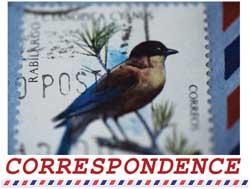 CORRESPONDENCE- a curatorial installation by Steve Clorfeine presenting the work of 40 artists, each invited to create works inspired by letters and postcards writen to Mr. Clorfeine over a period of 50 years. More about the exhibit A note from the curator When I first conceived the project, I was sorting through 7 shoeboxes of letters and postcards that I’d saved since 1962. Some of the correspondence had continued for 30-45 years and stood in stacks 4-6” high. Starting in college, a year abroad in Paris, graduate school, another year abroad in Eastern Europe, summers teaching at Naropa University in Boulder, Co., on tour in Europe performing and teaching, studying and teaching in Nepal and India – letters and postcards kept me connected as I shifted place and persona. What to do with all of this? I set aside long-standing correspondences as well as family and intimate letters. The remainder went into a shopping bag to be burned. That never happened. A few years went by until the idea came that the material could be transformed. I invited a few artist friends to choose from the collection and create an artwork. Through our mutual enthusiasm the idea grew and I invited more friends – visual and performing artists – near and far. The final group materialized during a residency at Vermont Studio Center this past Fall. At the same time I began to burn the love letters and most of the intimate correspondence and created a series of ash drawings and collages. In this project, the correspondence is re-ignited as found text and revealed as an installation site of friendship and discourse. It moves into a three dimensional present through a process of fabrication and interpretation. There is another aspect of correspondence which plays in this exhibition: what corresponds to what and how. In the present moment there is ultimate correspondence – things are as they are. We can draw inspiration from the way things are as we perceive their relationships before we judge or interpret. Correspondence: relationship across time and space. Thoughts and feelings across the page. When I write to you, I remember you now. Even before I write your name, you are there – in mind. We are in correspondence. We tell the news, we write our stories, and the invisible intimacy of our relationship leaves marks in the visible world. Hands on: pen/typewriter/paper Salutation/body/signature/address/stamp/post Wait/receive/read/feel. Steve Clorfeine is a performer, writer and teacher with a life-long interest in stories and coincidence.
INTERVIEW WITH FLORENCE DERAIL PART 1:
MINDFULNESS AND IMPROVISATION: A CONVERSATION WITH STEVE CLORFEINE BY LYNN HARTLEY Over the last ten years, Steve has been on the Authentic Leadership in Action (ALIA) arts faculty, which leads creative process sessions. At ALIA, creative process helps leaders become more fully attuned, moment-to-moment, to what is happening. “When people come to creative process, they have been spending a lot of time sitting in a chair, absorbing new theory, being in conversation. And then suddenly there comes a moment when they can let all that go. They can move into another part of themselves. It also balances mental and verbal engagement.” Improvisation also invites bravery and a willingness to engage in what Steve describes as “not knowing and using everything you have to go forward.” He elaborates: “It is always a challenge to bring more of ourselves into the present. Through mindfulness we come to notice our hesitation, our resistance. It takes effort to bring that in, to not be afraid of ourselves. By mixing mindfulness and improvisation, we invite a bit more of ourselves, from outside our usual comfort zones or strategies. How much can I include in being present? Can I include not being present? Can I include being afraid? Can I include hesitation and resistance? How much can I include? To me that is the question at the heart of improvisation.” This type of improvisation is very different than people’s preconceived ideas: “People often speak about improvisation as going wild—doing whatever you want. I’m speaking about something different, about stretching or expanding your attention and absorbing as much as you can, as directly as you can, to inform the choices you make.” In the creative process sessions, people begin to directly experience what is happening within themselves, in a playful way. “There is tremendous discipline in deep play. When you think of it from a child’s point of view, it’s almost an instinctive discipline. When you watch children play, they are completely absorbed in what they are doing. It is a natural discipline of attention.” While play may be natural to children, as we get older, we often lose the ability to fully engage in the moment. “We lose our confidence that it’s okay to play. We give in to the demands of being adolescents or adults and wrap our egos into those responsibilities. We don’t give ourselves the opportunity to play. I think this is why when we as ALIA artists improvise together, it’s scary on a certain level. Sometimes we don’t even have a plan even though we spend a lot of time pretending to plan!" “Scary is another way of saying, it is so deeply poignant that you can hardly get a grip on yourself. The call to openness is the call to compassion—compassion for yourself and compassion for others. As my friend Ruth Zaporah says about improv, “Everything your partner does is perfect.” Four-Minute Improv Exercise Stand facing in one direction, wherever you are, and scan the horizon. Notice what you notice. Shift your weight, pivot, and turn to face the next direction. Take the first few seconds to receive the new shape of what is in front of you. Then begin to scan the horizon, from left to right. Repeat in each of the four directions, for one minute each time. Notice how you feel. Steve’s reflection on the four-minute exercise: “I notice that slowing down this way invites vividness. Slowing down and receiving what’s in front of you and at the periphery – just receiving it, without judgment – this invites openness. I notice my state of mind—sometimes it is difficult to slow down. I might notice the running commentary that I have about everything going on. I want to receive things directly, and yet I have some interference, a kind of editorializing. All these things come up very quickly, and it is all very useful.” Back to Top |
|||
|
© Steve Clorfeine 2024 |
|||